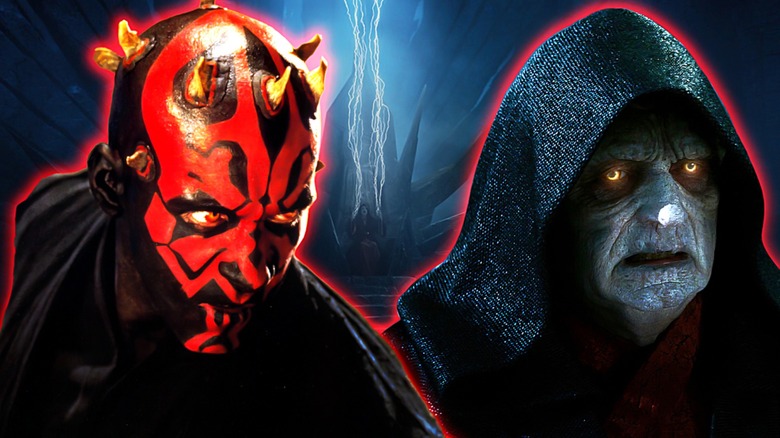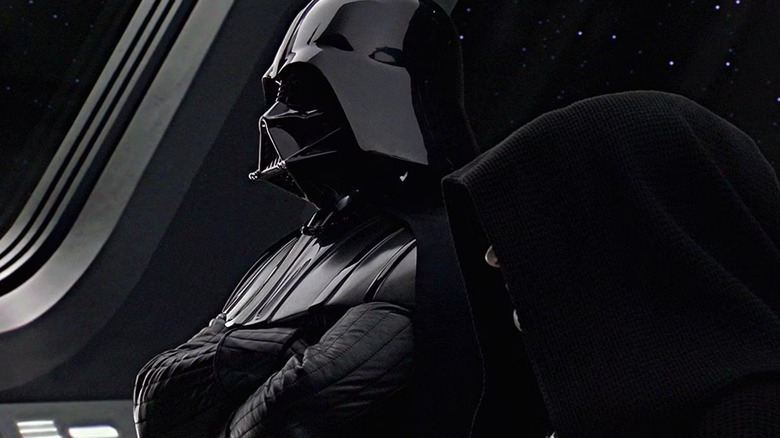Star Wars' Rule Of Two: The Sith's Biggest Weakness, Explained
The influence of the dark side of the Force is present throughout the "Star Wars" galaxy, with the Sith embracing it as they concoct plots to take over. They're calculated, mysterious, and dangerous, hence why they've managed to take power numerous times. Of course, one of the defining factors in the success of even the most powerful Sith in the "Star Wars" galaxy is the Rule of Two. Ironically, this ancient tradition has also proven to be one of the biggest weaknesses of their ideology from era to era.
Long before the Clone Wars and the Galactic Civil War, the Sith are numerous and spread across the galaxy. However, the very nature of the Sith — greedy, self-centered, and disloyal as they are — makes their control over the galaxy fleeting and allows the Jedi to defeat them. In response, the Sith Lord Darth Bane (who needs a trilogy of his own) creates the Rule of Two, which states that only two Sith Lords can exist at any given time. The master easily controls the dark side, while the apprentice studies under them, learning the dark side's secrets and aiming to usurp their master. They then take on a new learner and keep the cycle going.
While this makes it easier for the Sith to remain in hiding and perfect their dastardly plans before putting them into action, it leaves them vulnerable on two fronts. Not only is the rule predicated on the death of the master at the hands of the apprentice, but it leaves the Sith detrimentally outnumbered by the Jedi at all times. Thus, it's imperfect, to say the least, hence why one of the most notable Sith in galactic history never fully subscribes to it.
Emperor Palpatine never fully believes in the Rule of Two
A core tenet of the Rule of Two is a Sith Master passing their power and knowledge onto their apprentice once the latter kills them. It ensures that there's always a capable master present with an emerging student beneath them, ready to take their place and carry on Sith rule. However, Emperor Palpatine, aka Darth Sidious (Ian McDiarmid), doesn't seem to hold much stock in the Rule of Two as it's written. In both "Star Wars" canon and "Star Wars" Legends, it's evident that he seeks power for himself and himself alone, going as far as evading death.
In canon, Sidious takes on several apprentices, but he isn't eager to let his power pass to them. With his final learner, Darth Vader (Hayden Christensen, who made a hilarious reveal regarding the Sith's underwear) at his side, Sidious takes a vested interest in cloning. As seen in "Star Wars: Episode IX – The Rise of Skywalker," he uses the technology to stay alive, transferring his consciousness to a clone body to regain his lost power following his apparent death decades earlier. He does something similar in the Legends story "Star Wars: Dark Empire," returning from the grave in a clone body in hopes of ruling the galaxy again. In Legends, this is known as the Rule of One — or Palpatine's Doctrine.
Seeing as Darth Sidious is defeated by Rey Skywalker (Daisy Ridley) on Exegol, decades after being defeated by Vader and his son, Luke Skywalker (Mark Hamill), it's plain to see that the Rule of One is just as ineffective — if not more so — than the Rule of Two.

